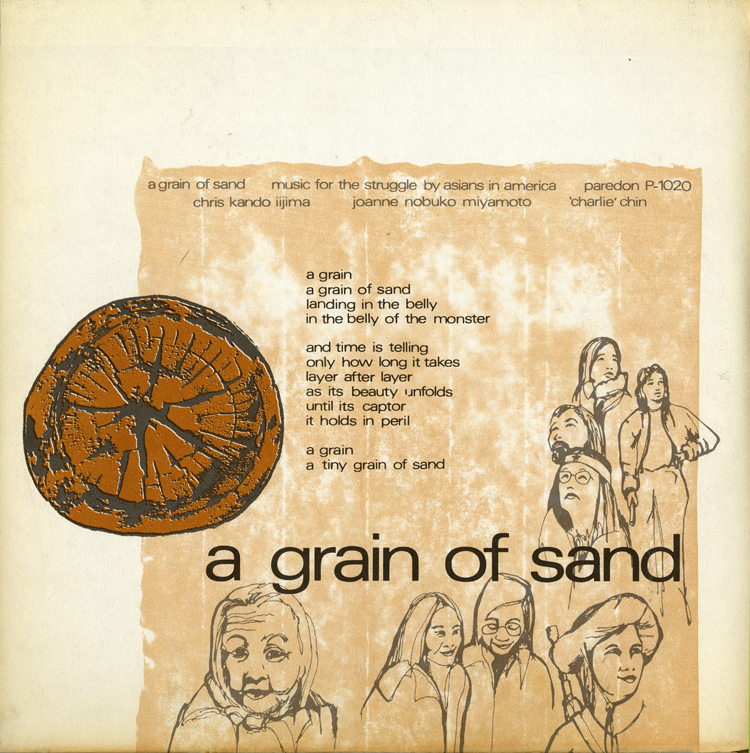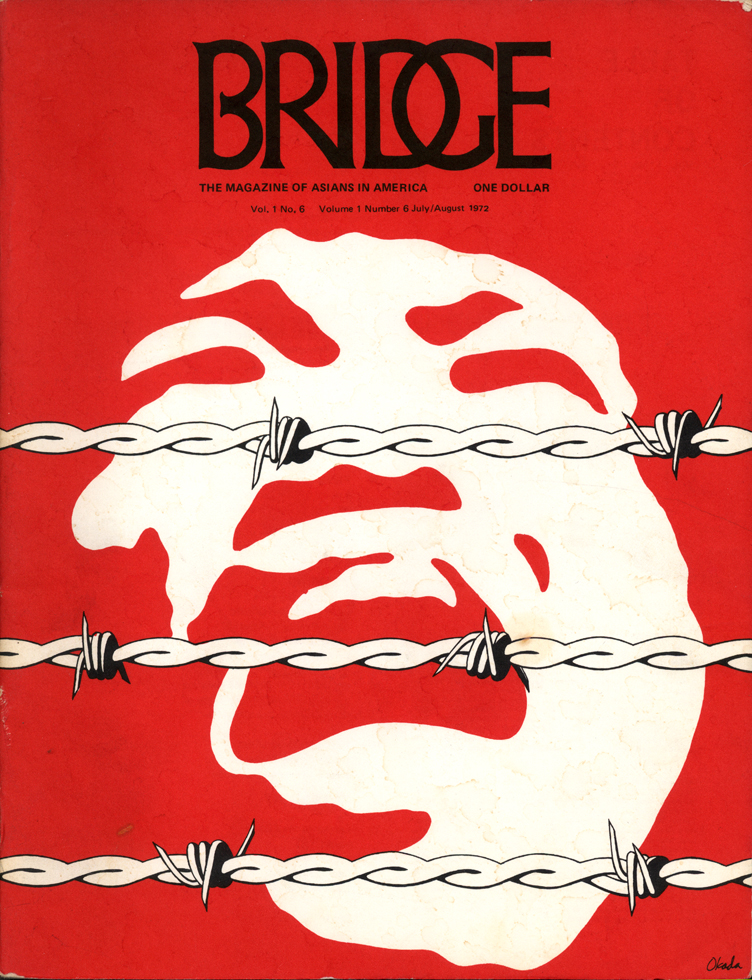In 1972, Basement Workshop published the arts book Yellow Pearl. Initially a project undertaken to illustrate and publish the music of Chris Iijima, Nobuko “Joanne” Miyamoto, and Charlie Chin (who would go on to record Grain of Sand in 1973, widely considered the first album of Asian American music), the project grew into a larger portfolio of writing, art, and music by over thirty creators. Titled after one of the group’s songs, Yellow Pearl connotes the value of Asian and Asian American culture and cleverly plays off the term “yellow peril,” the racist slogan used in the 19th and 20th centuries to provoke fear and exclusion of Asians from the U.S. Its creators introduce the portfolio in the following statement: “YELLOW PEARL is a collection of the creative talents of young Asian Americans. It is also an expression of an emerging consciousness of being Asian in America. We need to write about the War, Attica and our people’s history. We need to express our loves, our loneliness and our dreams, through YELLOW PEARL we share what we feel, what we think, and what we are with our brothers and sisters.”
Collections馆藏Collections馆藏Collections馆藏Collections馆藏Collections馆藏Collections馆藏Collections馆藏Collections馆藏Collections馆藏Collections馆藏Collections馆藏Collections馆藏Collections馆藏Collections馆藏Collections馆藏Collections馆藏Collections馆藏Collections馆藏Collections馆藏Collections馆藏Collections馆藏Collections馆藏Collections馆藏Collections馆藏Collections馆藏Collections馆藏Collections馆藏Collections馆藏Collections馆藏Collections馆藏Collections馆藏Collections馆藏Collections馆藏Collections馆藏Collections馆藏Collections馆藏Collections馆藏Collections馆藏Collections馆藏Collections馆藏Collections馆藏Collections馆藏Collections馆藏Collections馆藏Collections馆藏Collections馆藏Collections馆藏Collections馆藏Collections馆藏Collections馆藏Collections馆藏Collections馆藏Collections馆藏Collections馆藏Collections馆藏Collections馆藏Collections馆藏Collections馆藏Collections馆藏Collections馆藏Collections馆藏Collections馆藏Collections馆藏Collections馆藏
Yellow Pearl

25 April 2019 Posted.
Yellow Pearl. Museum of Chinese in America (MOCA) Basement Workshop Collection.
《黄珍珠》美国华人博物馆(MOCA)地下室工作坊馆藏

